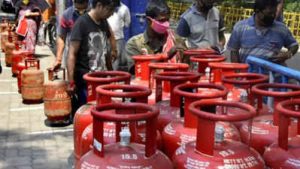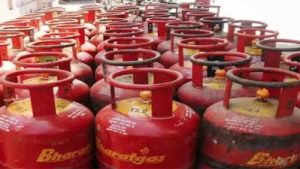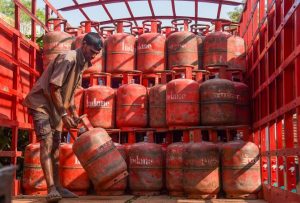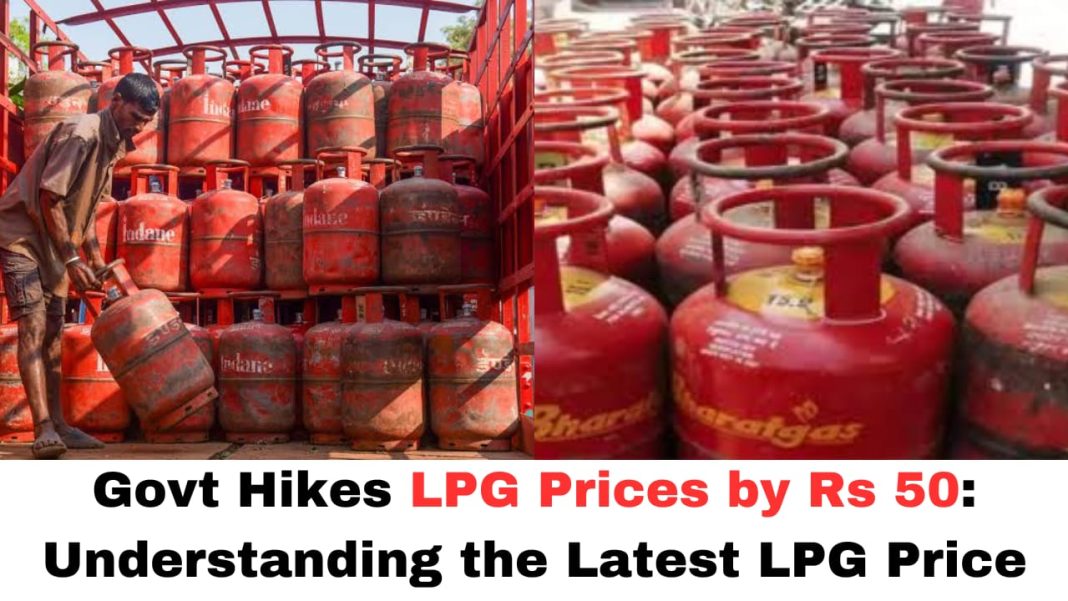Digital News Guru National Desk:
The Indian government has announced a Rs 50 increase in the price of Liquefied Petroleum Gas (LPG) cylinders, effective April 8, 2025. This adjustment affects both beneficiaries of the Pradhan Mantri Ujjwala Yojana (PMUY) and general consumers. For PMUY beneficiaries, the cost of a 14.2-kg cylinder will rise from Rs 503 to Rs 553, while for non-PMUY consumers, the price will increase from 803 to 853.
Background and Government’s Rationale
Union Petroleum and Natural Gas Minister Hardeep Singh Puri stated that this price hike aims to offset the Rs 43,000 crore losses incurred by oil marketing companies due to subsidized gas prices. He emphasized that LPG prices undergo periodic reviews every two to three weeks, considering global market trends and domestic economic factors.

LPG Price Hike: What the Rs 50 Increase Means for Indian Households
The increase in LPG prices is expected to have a significant impact on households across the country, particularly those in lower-income brackets. PMUY beneficiaries, who were initially provided LPG connections at subsidized rates to promote clean cooking fuel usage, will now face higher expenses. The additional Rs 50 per cylinder translates to an increased annual expenditure of approximately Rs 600 for households using one cylinder per month.
General consumers will also experience a financial strain, with the price per cylinder rising to Rs 853. This hike may lead some households to reconsider their energy consumption patterns or seek alternative cooking fuels, potentially impacting the government’s efforts to promote LPG usage as a cleaner alternative to traditional biomass fuels.
Economic Implications
The LPG price hike comes at a time when the Indian economy is grappling with various challenges, including inflationary pressures and global economic uncertainties. The increased cost of cooking gas is likely to contribute to overall inflation, as it affects not only household expenses but also the operational costs of businesses that rely on LPG.
Moreover, the government’s decision to raise excise duty on petrol and diesel by Rs 2 per litre, while not directly impacting retail prices, indicates an effort to balance fiscal responsibilities with consumer interests. These measures reflect the complex dynamics of managing subsidies, market prices, and economic growth.

Comparative Analysis with Global Trends
India is not alone in facing challenges related to fuel pricing. Globally, fluctuations in crude oil prices, geopolitical tensions, and supply chain disruptions have led to volatile energy markets. Many countries have had to adjust domestic fuel prices in response to these external factors.
However, the impact on consumers varies depending on the extent of government subsidies, domestic production capacities, and alternative energy sources available in each country. India’s heavy reliance on imported LPG makes it particularly susceptible to global price movements, necessitating a delicate balance between market-driven pricing and consumer protection.
Future Outlook and Recommendations
Given the periodic review mechanism mentioned by Minister Puri, there is a possibility of future adjustments to LPG prices based on international trends and domestic economic conditions. Consumers are advised to stay informed about potential changes and plan their household budgets accordingly.
To mitigate the impact of such price hikes, the government could consider enhancing support mechanisms for vulnerable populations, such as increasing subsidies or providing direct financial assistance. Additionally, promoting energy efficiency and alternative cooking technologies, like electric or solar cookers, could reduce dependence on LPG and provide more sustainable solutions in the long term.

Conclusion
The Rs 50 increase in LPG cylinder prices reflects the complex interplay between global energy markets, domestic economic policies, and consumer welfare. While the government’s intent to address the financial health of oil marketing companies is understandable, it is crucial to ensure that such measures do not disproportionately affect the most vulnerable segments of society. A balanced approach that considers both economic imperatives and social equity will be essential in navigating the challenges posed by fluctuating energy prices.
You May Also Read: Prime Minister Modi to Participate in ‘Navkar Mahamantra Divas’








